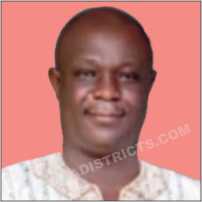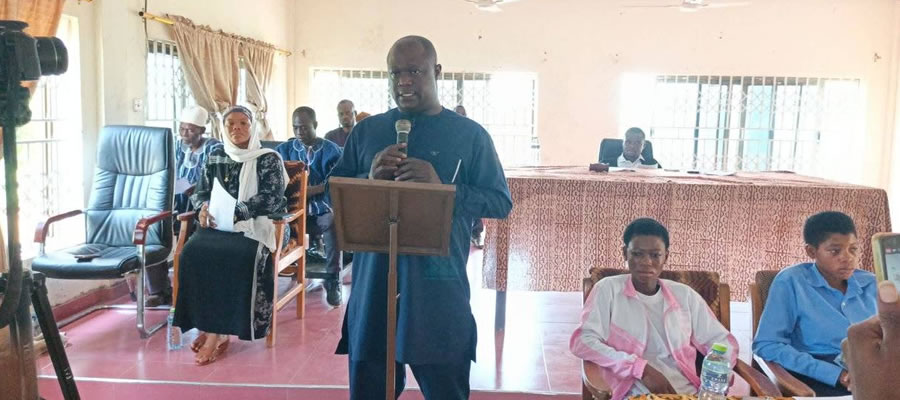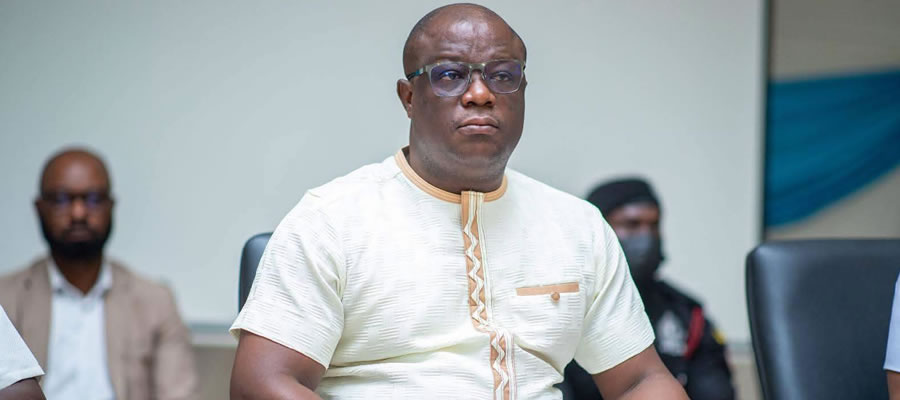

Energy
Energy, especially electricity is one of the main elements that influence the rate of economic development in any locality. It is key to production and lures investments. The importance of its availability cannot therefore be overemphasized in the development efforts of any given people. Currently about 42 communities out of 45 in the District are connected to the national electricity grid.
This forms about 93% of the total number of communities with electricity services. Pockets of formal workers (civil and public sector workers) currently use LPG which is obtained from Wa, the regional capital. Majority of the households in the district rely on fuel wood and charcoal for cooking at the expense of the environment. Shea butter oil kerosene lanterns are also predominantly used by some households for lighting.
Transportation
The District currently has only 5km stretch of road (Fian to Bussie) tarred. Sooner than late another 3km stretch of road (Wogu to Issa-District capital) will be tarred. The conditions of most feeder roads are motor able. Currently there has been some improvement as a result of on-going reshaping and rehabilitation works that were than by GSOP and Department of feeder roads. There is also poor road network linking farm centres and this greatly accounts for post harvest losses. Some of the major feeder roads are:
• Daffiama- Bussie
• Daffiama- Fian
• Fian- Wogu- Issa- Kojokpere
• Fian- Bussie
• Issa –Tabiese-Sazie
• Kojokpere-Challa- Kpare
Despite the on-going works on the feeder roads, communities like Kamehegu, Kenkele, Sulagua and Kanato are still inaccessible especially in the rainy seasons where most feeder roads become unmotorable. There is therefore the need to improve accessibility in these areas by upgrading some of the feeder roads into second class status to facilitate easy movement of people, goods and services.Transportation service provision in the District is limited and it is dominated by the private sector with operators using.
Telecommunication
The telecommunication sector is poorly developed with only one (1) ICT service center at Daffiama community. Apart from individual personal mobile phones, there are no institutional telephones or public telephone booths to provide the required services. The only reliable mobile telecommunication services the district has are Vodafone and MTN mobile Networks.
Housing
Housing is a major indicator for measuring the level of development in developing countries. It reflects the living conditions of the people in a clearer way. The District is grappling with a number of bizarre images of housing which have to be placed on a high agenda in the next four years.
Most of the houses are characterised by poor drains, exposed foundations and basically lacking bathing and kitchen facilities. A survey of the district indicates a room occupancy ratio of three (3) persons per room. Although this figure suggests adequate housing, it is not so in terms of quality housing. Most of the buildings are not constructed with good materials; 81.4% of the houses are made out of mud brick/Earth, 0.7% are made of wood, 15.3% are cement block/concrete, 0.8% are thatch, 0% are bamboo and others formed 0.3% (Source: 2010 population and housing census.
Materials for Housing
Varied forms of materials are used in building or constructing houses across the District. The materials used are influenced by the environmental conditions within the District and the region at large. Table 1.24 below indicates the materials mostly used in constructing houses in the District.
Roofing Materials Used in the District
Iron sheets are the most common roofing material. Almost half of the houses used this kind of material. Also thatch (10.8 percent), mud (5.0 percent), slate/asbestos (0.2 percent), metal sheets (82.1 percent), and bamboo (0.1 percent) are frequently used. The disadvantages of thatch and bamboo are that it does not last long, is very vulnerable to heavy rainfall and storms, highly combustible in case of fire outbreak and has to be replaced on regular basis. Just a small percentage of the houses are covered with tiles (1 percent) or other material like asbestos (0.2 percent).
Conditions of the House
Interestingly, there are remarkable figures about the use of a bathroom in the District. In this analysis a bathroom does not include a toilet; it only covers the facility for washing or bathing. About half of the households use a private bathroom. The data below shows the break-down: own bathroom 47.99 percent, shared bathroom 12.26 percent, private open cubicle 14.75 percent, sheared open cubicle 12.86 percent, public bathhouse 1.86 percent, bathroom in another house 0.81 percent, open space around house 9.20 percent, river/pond/lake/dam 0.15 percent and others formed 0.07 percent.
Overall, it is clear that housing conditions in the District are poor. Especially during the rainy season with a lot of heavy rainfall, houses are vulnerable and do not give sufficient shelter for the people.
Household Ownership
It turned out that 90% of the households owned the house they were living in. Five (5%) percent of the households were tenant and 2%co-owner. The rest of the houses were either owned by relatives (3 percent) or rent free (2 percent). Land litigation as a problem was mentioned during bottom-up planning sessions with area councils. Almost half of the households, 46 percent, inherited the piece of land they were living on. One fourth has leasehold on the land and 24 percent have land rent-free. Only 5 percent of the households rented the land.
Summary
The housing situation is very poor in the district. The houses are vulnerable to heavy rainfall and storms because of the poor building materials. Furthermore, the living conditions are below standards, as people live in structures that are not mosquito, water or sound proof. Besides that, basic facilities like toilet, kitchen, running water and electricity are not available in most houses. Poor housing, problems of land litigation, poor town planning and inadequate housing facilities were identified during planning sessions with Area Councils mentioned.
Date Created : 4/10/2018 3:02:02 AM











 facebook
facebook
 twitter
twitter
 Youtube
Youtube
 +233 593 831 280
+233 593 831 280 0800 430 430
0800 430 430 GPS: GE-231-4383
GPS: GE-231-4383 info@ghanadistricts.com
info@ghanadistricts.com Box GP1044, Accra, Ghana
Box GP1044, Accra, Ghana